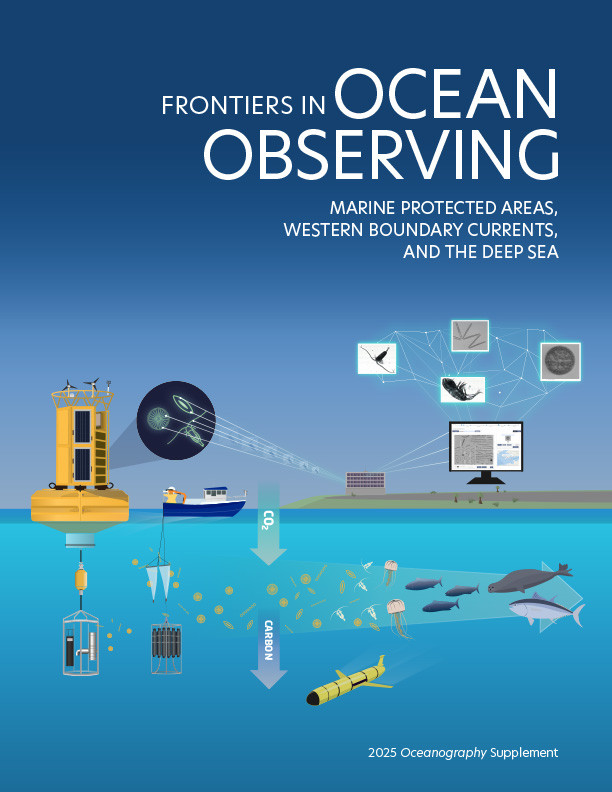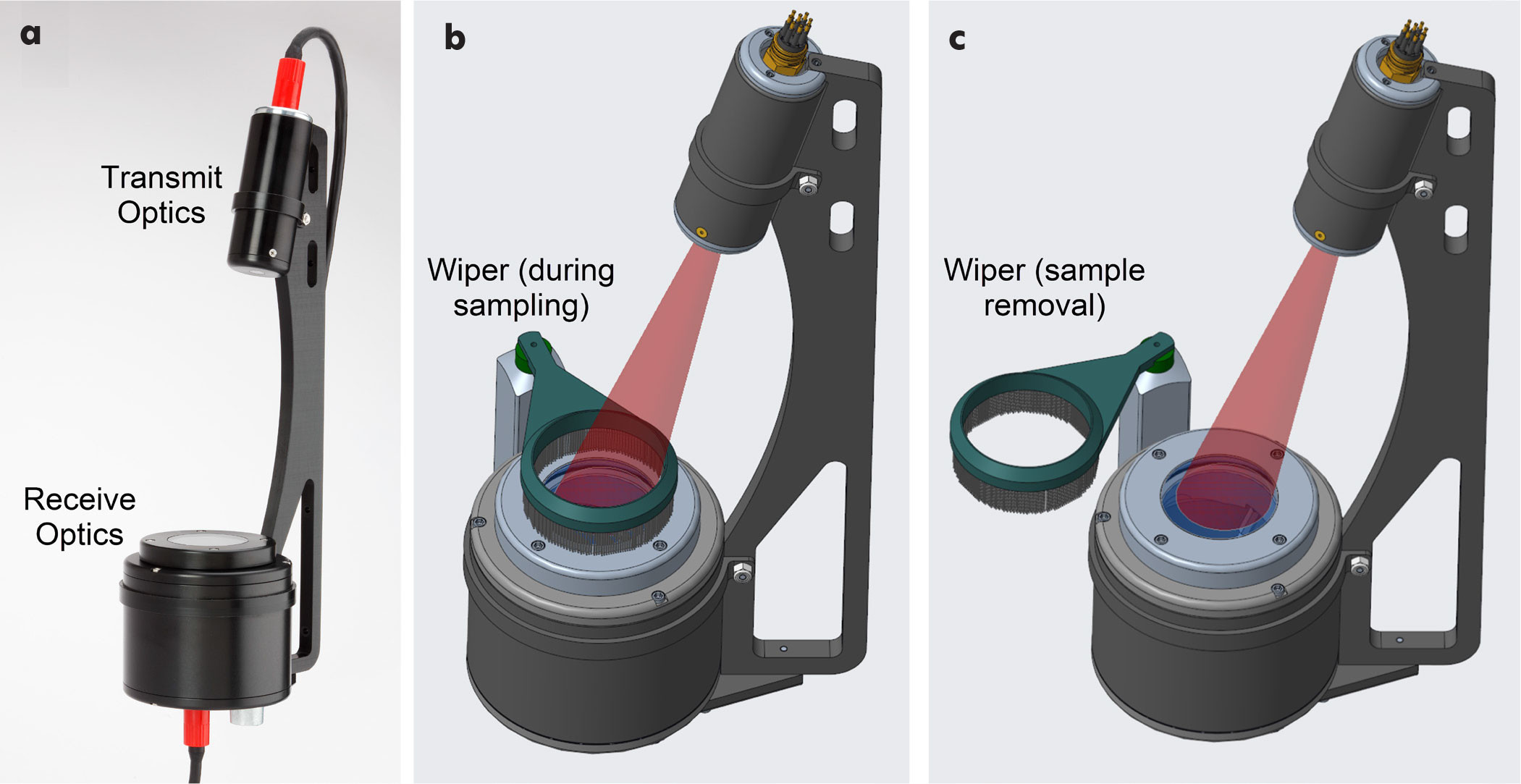Full Text
Introduction
The ocean’s biological carbon pump (BCP) comprises a set of physical and biological processes that impact how carbon is exchanged between the atmosphere, the land, and the ocean. Sinking particles, such as “marine snow,” are a key mechanism of the BCP, where the depth of remineralization of carbon from these particles governs the extent to which carbon releases back into the atmosphere or sequesters in the deep ocean (Siegel et al., 2021). In addition, this sinking flux is a key energy source for deep water and benthic ecosystems. Studying these particles remains challenging, however, making it difficult to quantify carbon flux on a global scale. Global climate change further decreases the predictability of oceanic carbon flux due to the indirect changes induced by warming, ecosystem shifts, and acidification. Other human-induced alterations of the ocean’s carbon cycle, such as proposed marine carbon dioxide removal (mCDR) techniques like ocean alkalinity enhancement or nutrient fertilization, stand to further complicate carbon quantification and the ability to establish a carbon flux baseline from which future measurements can be compared and contextualized.
Marine protected areas (MPAs) are ideal locations for studying the natural carbon cycle in the ocean. Although indirect influences such as climate change, acidification, and pollution still impact them, MPAs (especially those designated as no-entry and no-take) are largely protected from harmful direct human activities. By protecting relatively intact ecosystems from human interference, these sites provide ideal “control” environments for studying and establishing an independent baseline of carbon flux from natural oceanic and biological processes. An observationally constrained BCP baseline will enable scientists to better quantify human-induced direct (e.g., nutrient fertilization) and indirect (e.g., global climate change) perturbations to the carbon cycle, and to better understand the responses of pelagic-benthic energy transfer and benthic ecosystems. Measurements of carbon flux in MPAs also serve as indicators of ecosystem health, as long-term and real-time monitoring of sinking particles can provide data that enable (1) expedited intervention when perturbations are detected, and (2) implementation of more sustainable management practices.
Measuring Sinking Particles
Typical methods for measuring sinking particles in the ocean include deployment of sediment traps throughout the water column to capture particles to be brought back to the ship (or lab) for analysis. They are time-consuming, labor intensive, and costly, which hinders the widespread study of sinking particles throughout the ocean. While sample collection remains a critical part of oceanographic research, the development and advancement of autonomous platforms, such as autonomous underwater vehicles (AUVs), instrumented moorings, and profiling floats, has enabled more research to be conducted with in situ instrumentation through globally distributed platform and sensor networks. Instrumentation for studying sinking particles in situ on autonomous platforms is limited, however, with requirements on size, weight, power, cost, and data bandwidth/storage hindering the types of sensors permissible for integration with underwater platforms.
Transmissometers show promise in meeting these constraints for studying sinking particles in situ, as the measured beam attenuation coefficient due to particles (cp) serves as an established proxy for suspended particulate organic carbon (POC; Bishop, 1999). In fact, the earliest studies of sinking particles from autonomous platforms employed transmissometers aboard floats, where researchers observed an increasing trend in measured cp and attributed it to particles settling and accumulating on the instrument’s upward-facing window over time (Bishop et al., 2004). While this demonstrates the potential for transmissometers to measure sinking particles, existing transmissometers do not suit this application because the instrument housing interferes with capturing naturally settling particles and the small beam cross section results in a small sampling capacity compared to sediment traps (Estapa et al., 2024). Therefore, transmissometer design advancements are necessary in order to optimize the sensor for measuring sinking particles in situ and enable widespread adoption and implementation on autonomous platforms.
Optical Sediment Trap Concept
We are developing a modified transmissometer, called the LISST-OST (Laser In-Situ Scattering and Transmissometry Optical Sediment Trap), to directly address instrumentation shortcomings for straightforward measurements of sinking particles on autonomous platforms (Figure 1). The LISST-OST measures diffuse attenuation in an off-axis optical geometry that enables the sensor to collect sinking particles while minimizing the disruption of their natural settling pathways. Although originally conceptualized for Lagrangian floats (e.g., Biogeochemical-Argo) to collect and measure particles at parking depths up to 2,000 meters, the LISST-OST can also be deployed on stationary platforms with a wiper that reduces biofouling and effectively “refreshes” the measurement at regular intervals.
|
|
The sensor consists of two pressure housings: (1) the transmit optics, which includes a single wavelength (approximately 650 nm) source with a diverging beam geometry, and (2) the receive optics, which includes an upward-facing sapphire collection window, focusing optics, and a detector to measure the transmitted optical signal. The large (approximately 5 cm) optical beam cross section at the collection window enables the collection and measurement of a statistically representative sample of sinking particles. As Figure 2 shows, as particles settle on the upward-facing window, the sensor measures changes in diffuse attenuation, which is similarly correlated with POC like cp (Estapa et al., 2024). The LISST-OST measures diffuse attenuation at a rate of 1 Hz using light modulation and synchronous detection to reject ambient light.
|
|
Current and Future Directions
A LISST-OST prototype recently completed its first successful field tests in Monterey Bay, California, USA. The instrument was deployed with other in situ optical sensors on a profiling/drifting platform at depths up to 100 m to explore the trade-offs between, and capabilities of, in situ optical sensors to monitor sinking particles and estimate POC flux. The deployment demonstrated (1) the LISST-OST can successfully collect particles and monitor particle accumulation through changes in diffuse attenuance on an autonomous profiling platform, and (2) sufficient upward motion of the platform can clear particles from the collection window to “refresh” the measurement. Quantitative results and correlations with POC flux are in progress; however, this successful deployment serves as a critical demonstration before large-scale sensor deployments to support MPA management and study of spatiotemporal changes in carbon flux.
The LISST-OST has broad applicability to future MPA management and monitoring efforts. Deploying distributed networks of these sensors in MPAs can provide data to quantify ecosystem health and productivity. Long-term deployments in MPAs can improve management efforts by enabling faster response times to human-induced perturbations that disrupt localized carbon cycles from their baseline fluxes. On a broader scale, we can improve our quantification of global ocean carbon flux and enhance our understanding of how climate change and human activities impact flux by conducting comparative analysis between LISST-OST data collected from within MPAs versus the open ocean. These data can also be used to support the establishment of new MPAs, as localized measurements that indicate an area exhibits high productivity or carbon export potential could be used to argue for protection of the area from human interventions.
Acknowledgments
The sensor development was funded by the National Science Foundation through the Small Business Technology Transfer (STTR) program under award number 2136735. The views and opinions of authors expressed here do not necessarily state or reflect those of the US government or any agency thereof.



